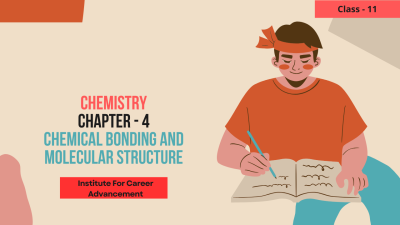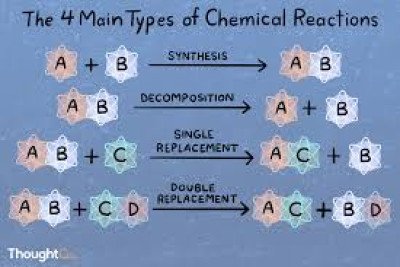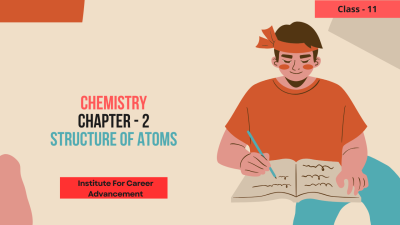Hydrocarbons - Class 11
Hydrocarbons in Class 11 Chemistry are all about the building blocks – the simplest organic molecules! Here's a quick overview: Carbon and Hydrogen Take Center Stage: Get ready to explore the world of compounds made solely from carbon and hydrogen atoms – that's what hydrocarbons are! This course delves into the different types of structures these simple molecules can form. Alkanes: The Saturated Bunch: Meet the alkanes, the simplest hydrocarbons with single bonds between all their carbon atoms. You'll learn about their general formula (CnH2n+2) and explore their properties like being unreactive and good fuels. Alkenes and Alkynes: Double or Triple the Trouble? Move on to alkenes and alkynes, where the fun begins! Alkenes have one double bond, while alkynes have a triple bond, introducing a bit of reactivity and making them more interesting than alkanes. Isomers: The Shape-Shifters: Hydrocarbons can be shape-shifters! Isomers are molecules with the same formula but different arrangements of atoms, leading to unique properties. This course introduces you to the concept of structural isomers. (This may depend on your specific curriculum) Nomenclature: Cracking the Code: Learn the language of hydrocarbons! This course equips you with the skills to name alkanes, alkenes, and alkynes systematically, a crucial skill for future chemistry endeavors. একাদশ শ্রেণীর রসায়নে হাইড্রোকার্বনগুলি বিল্ডিং ব্লক সম্পর্কে-সহজতম জৈব অণু! এখানে একটি দ্রুত ওভারভিউঃ কার্বন ও হাইড্রোজেন কেন্দ্রীয় পর্যায় গ্রহণ করুনঃ শুধুমাত্র কার্বন এবং হাইড্রোজেন পরমাণু থেকে তৈরি যৌগগুলির জগৎ অন্বেষণ করার জন্য প্রস্তুত হন-এটাই হাইড্রোকার্বন! এই কোর্সটি এই সাধারণ অণুগুলি তৈরি করতে পারে এমন বিভিন্ন ধরণের কাঠামোর মধ্যে অনুসন্ধান করে। অ্যালকেনঃ স্যাচুরেটেড গুচ্ছঃ সমস্ত কার্বন পরমাণুর মধ্যে একক বন্ধন সহ সহজতম হাইড্রোকার্বন অ্যালকেনগুলির সাথে মিলিত হন। আপনি তাদের সাধারণ সূত্র (CnH2n + 2) সম্পর্কে শিখবেন এবং তাদের বৈশিষ্ট্যগুলি যেমন প্রতিক্রিয়াশীল এবং ভাল জ্বালানী হিসাবে অন্বেষণ করবেন। অ্যালকিনেস এবং অ্যালকিনেসঃ সমস্যা দ্বিগুণ নাকি তিনগুণ? অ্যালকিন এবং অ্যালকিনে চলে যান, যেখানে মজা শুরু হয়! অ্যালকিনের একটি দ্বিবন্ধন রয়েছে, অন্যদিকে অ্যালকিনের একটি ত্রিবন্ধন রয়েছে, যা কিছুটা প্রতিক্রিয়াশীলতা প্রবর্তন করে এবং তাদের অ্যালকেনের চেয়ে আরও আকর্ষণীয় করে তোলে। আইসোমারঃ আকৃতি পরিবর্তনকারীঃ হাইড্রোকার্বন আকৃতি পরিবর্তনকারী হতে পারে! আইসোমারগুলি একই সূত্রযুক্ত কিন্তু পরমাণুর বিভিন্ন বিন্যাসের অণু, যা অনন্য বৈশিষ্ট্যের দিকে পরিচালিত করে। এই কোর্সটি আপনাকে স্ট্রাকচারাল আইসোমারের ধারণার সাথে পরিচয় করিয়ে দেয়। (This may depend on your specific curriculum) নামকরণঃ কোড ক্র্যাক করাঃ হাইড্রোকার্বনের ভাষা শিখুন! এই কোর্সটি আপনাকে পদ্ধতিগতভাবে অ্যালকেন, অ্যালকিন এবং অ্যালকিন নামকরণ করার দক্ষতার সাথে সজ্জিত করে, যা ভবিষ্যতের রসায়নের প্রচেষ্টার জন্য একটি গুরুত্বপূর্ণ দক্ষতা।
English
Last updated
Wed, 27-Nov-2024



















